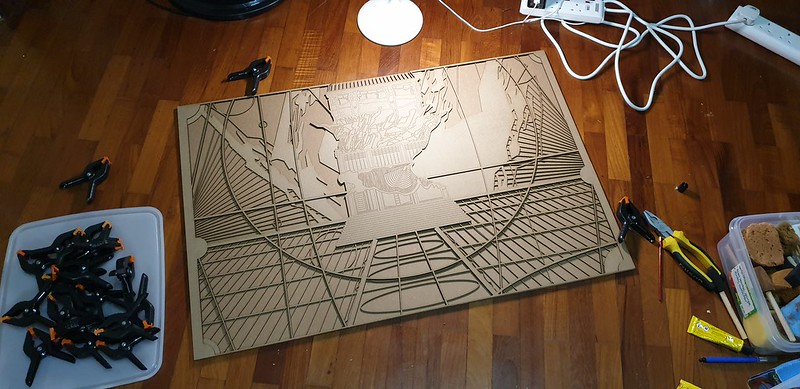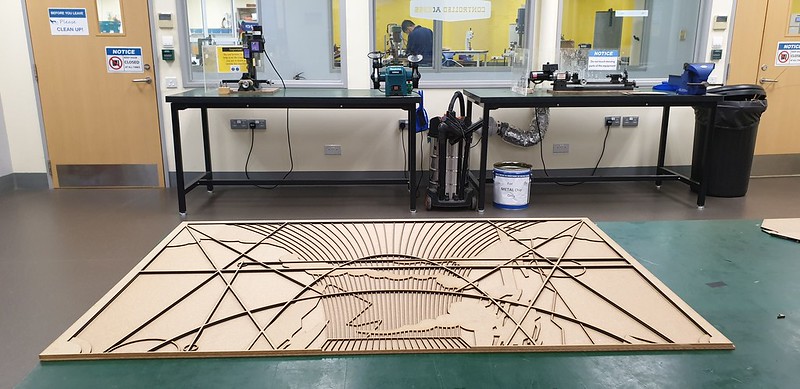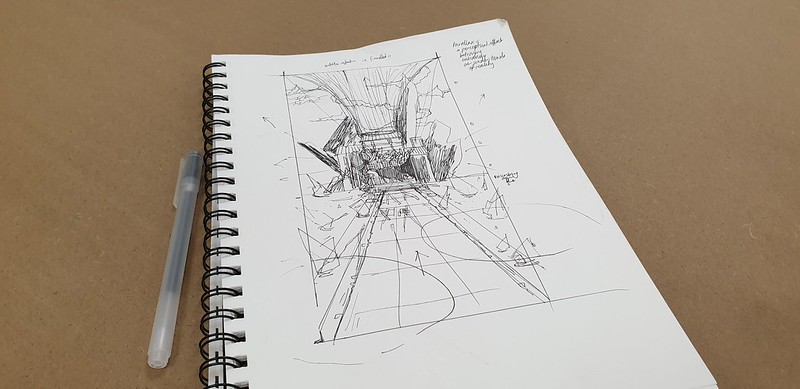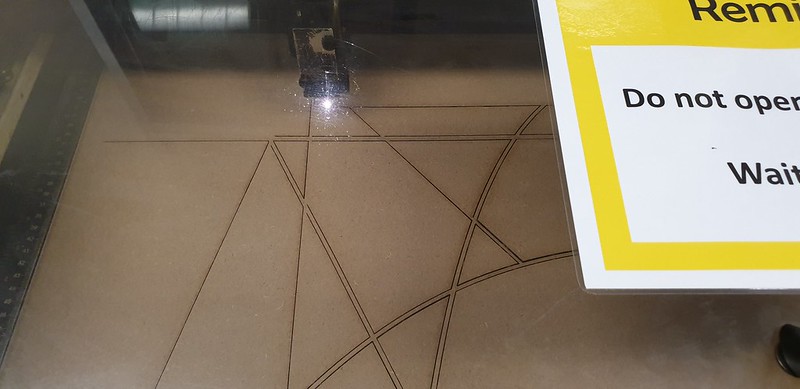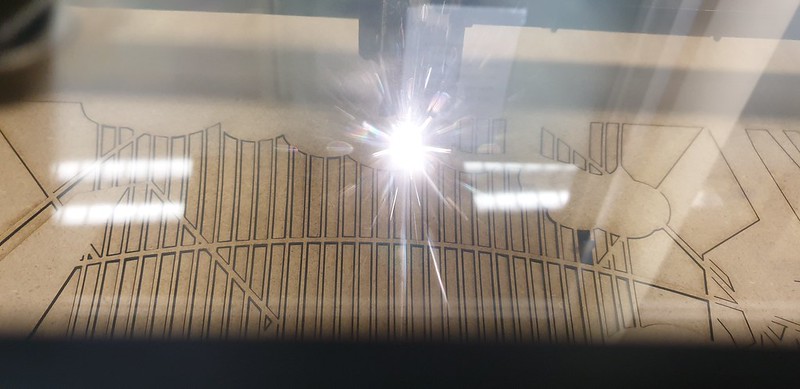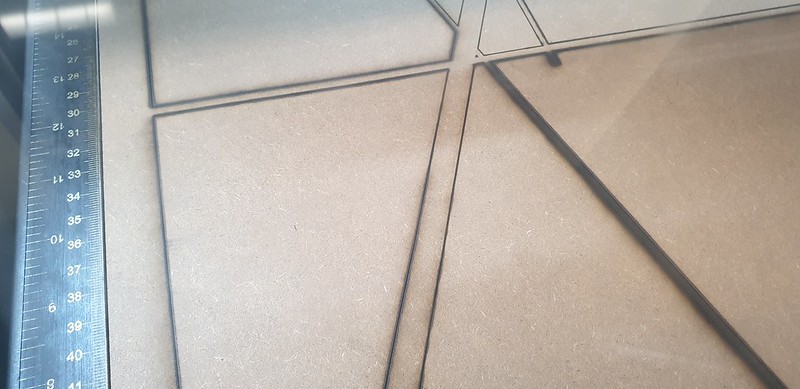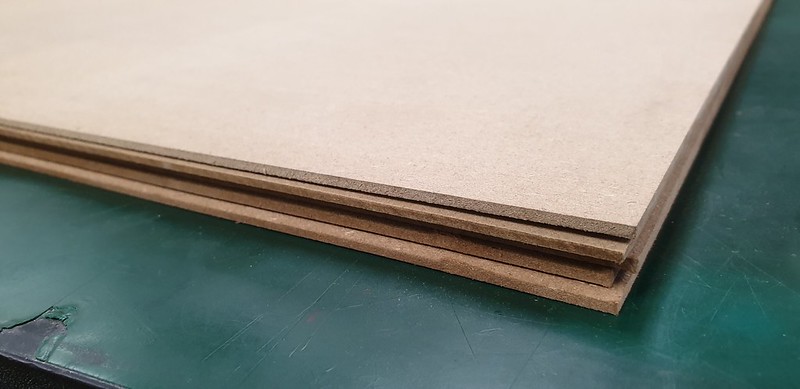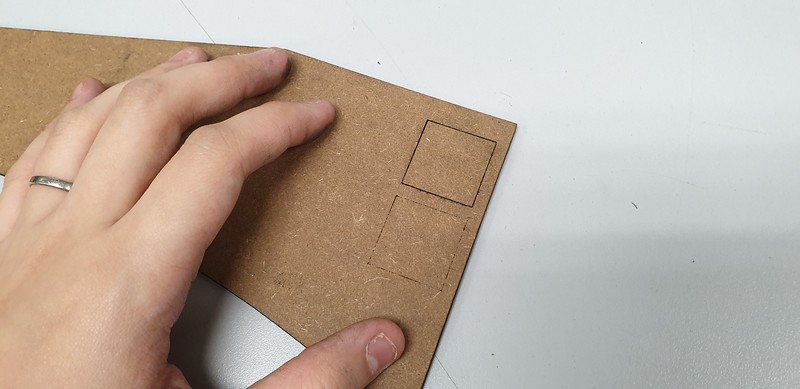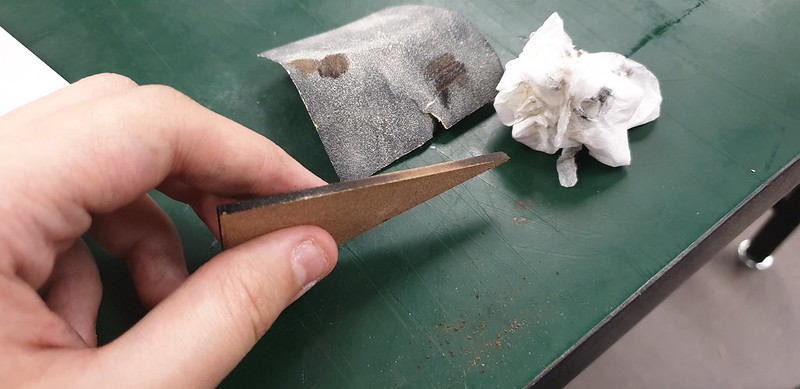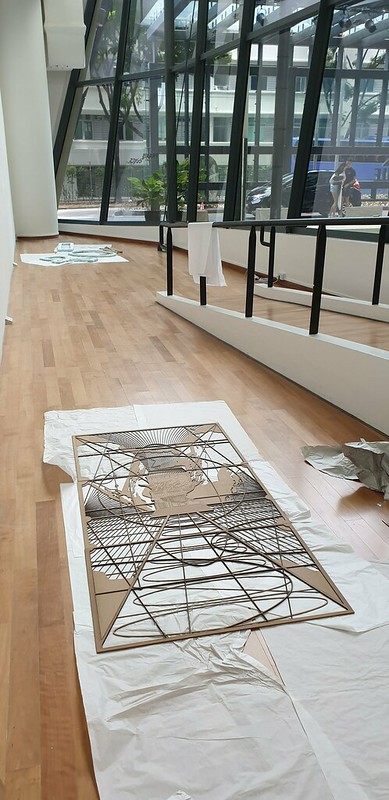
The documentation of this project, "The Last Meal", comes a bit late - although perhaps a little fittingly because a number of food-related ailments seemingly kept me from being able to work at my maximum potential.
Earlier this year, I was fortuitously brought together with Chef Ming (of JAM at Siri House) - by The Substation - and thus began a collaboration to reinterpret local/hawker fare into a kind of anxiety-provoking menu. A disturbingly uncanny trip up and down and around memory lane! A speculative vision of our human
I had recently sought treatment (CBT/Exposure Therapy) for what has been a lifelong affliction of emetophobia (a completely debilitating fear of vomiting) and an unreasonable aversion to acidic or vinegary foods (a difficult thing to explain at times, because it can sound absurd to preemptively tell everyone "NO VINEGAR PLZ" in the off-chance that any unknown dish might have vinegar). And I had also seen an endocrinologist to ask if there was anything to explain my ridiculously tiny appetite and aversion to cold temperatures - and was subsequently diagnosed with hypothyroidism (so said all the tests, despite me being an extremely hyper person). And finally, the biggest factor of all that had triggered this intense self-examination was: pregnancy! SHOCK! HORROR! Yes folks, the Ding and South are unexpectedly multiplying (stay tuned for a documentation of this new long-term project), and this meant that for a period of time during the first trimester I developed an strong aversion to my favourite food of all - eggs! This was very hard to live down indeed, compounding all of my food anxieties despite my attempts to deal with them head-on like an adult by following up with all these medical investigations. So all of this was in the background as we began discussions for this food project....
The starting point for our conversation had been one of my past projects from a Healthcare Workshop with the Kyoto Institute of Design x Royal College of Art, whilst I was doing my MA at Design Interactions (RCA). In a way, that workshop's premise was already a bit like smashing two worlds together: you had that base of a historically practical and functional Japanese approach to researching and designing for elderly care (I remember our Japanese collaborator bringing to us these booklets of amazing innovative mobility aids and novel healthcare aids designed to assist in every aspect of elderly care) - meeting the provocative, parallel realities of a speculative future (as students from our Design Interactions programme used to call it, ahem, a more "DI" approach).


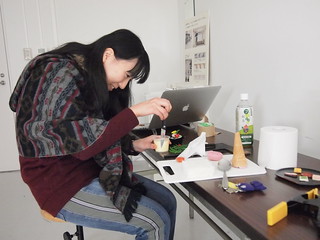
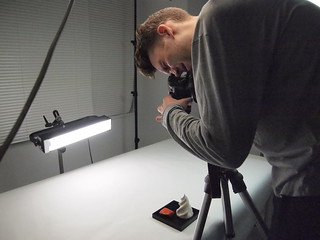
Kyoto 2014: Kyoto D-lab held a Healthcare Futures Workshop centering on robotics in collaboration with the Design Interactions Course at the Royal College of Art - led by Professor Anthony Dunne and James Auger and D-lab’s Professor Julia Cassim.
Me, Calum Bowden, and Hiroko Narasaki worked on a project imagining a scenario where a robot was to prepare your "last meal", having collected a lifetime of data of your food preferences, being able to robotically prepare the food you wanted in a texture that you could consume despite all your age-related changes in chewing and swallowing physiology. We discussed the ways in which factors such as end-of-life, food preferences, and necessary food modifications could be determined, and surveyed Japanese people on a list of foods they liked most. (Obvs this was also borne from our common interests in eating lots of good food in japan and spending a long time in supermarkets and food halls looking at all the beautiful plastic foods and gorgeous food packagings...)
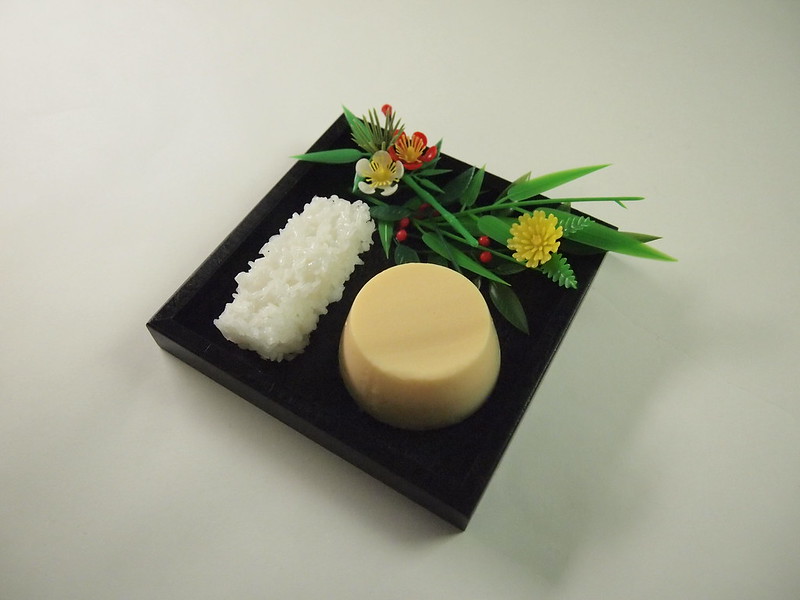
At the time we also thought that there might also be the issue where a meal is the sum of many parts and that people develop habits for eating certain foods together with others. But when we collect the data about the meal, the essential connections between unusual connections could also be broken - and odd pairings might be made. For example, in this case someone told us they loved foods such as Annin Tofu, Premium Niigata Rice, and Ashirari Decorations (to liven up the plating of her food). But in reality, no Japanese person would logically make a menu of Annin Tofu (Almond Jelly) together with Rice.
This was the starting point of the conversations we had to develop The Last Meal in Singapore, and to engage with a wider set of concerns facing the food industry in the near future (and specific to Singapore). Rather than to capture nostalgia in a perfectly rendered dish, the idea was to invoke the sense of the uncanny through subtle means. A twist of presentation, an unfamiliar texture, a physical constraint. The amount of alienation had to be right, and it was good that Ming kept us all on track by focusing on elements that would be universally recognisable by all Singaporeans.
One thing that was clear was that when we imagined someone eating these foods in a near-future post-apocalyptic bunker, the person in the bunker was very specifically us. A Singaporean, here in the present. It wasn't a baby from the future who hadn't had the chance to gain the lived experience of enjoying hawker food in the form that we eat right now. It wasn't someone from a foreign country being introduced to Singaporean hawker cuisine for the first time. It wasn't about exoticising or fetishising our nostalgia for hawker cuisine and 'heritage foods'. It was instead about transporting a Singaporean living in the present into a distant, uncertain food future where perhaps food security was an issue; where automation and efficiency was top priority to the extent of influencing hawker practices, where alternative proteins had become widely accepted in an era of land scarcity; where steady state foods would be commonplace backups; where a rapidly aging population would seek out enzyme softened versions of favourite foods to recapture the tastes of olde...
Somehow this also needed to be rooted in reality, so we planned to shoot a series of audiovisual stimulation aids to excite (or confuse) the senses and stimulate (or deflate) the appetite. With the help of Cain and the sub team, we shot Ming in his kitchen at Siri House cooking up the originals of the dishes that were about to be reinterpreted (or as Ming likes to say, that we were about to try to knock off the pedestal...)


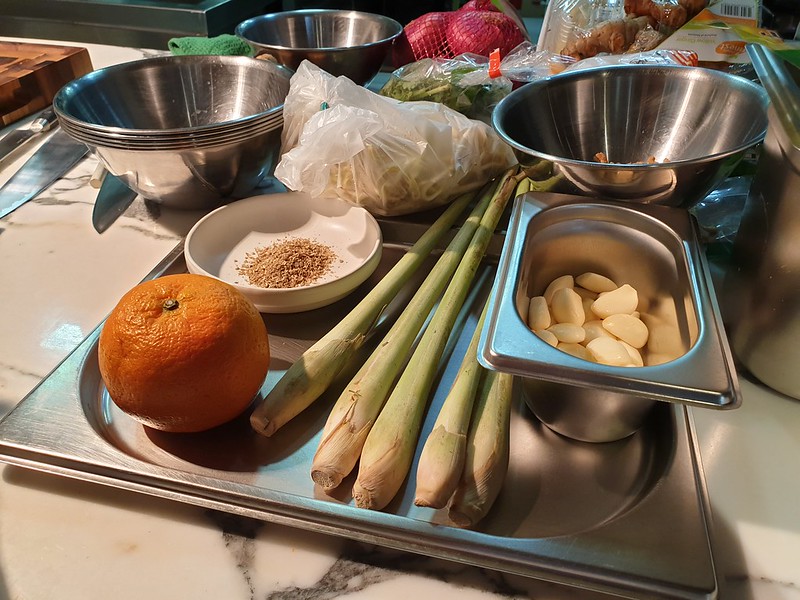

Although we had recorded sound on site in the kitchen, the original sound was not usable - it held the sound of a living kitchen with food being prepared and a restaurant during service. If I had used that original sound, it would feel like you were a disembodied spectator looking into some other space when you listened to the video like that. But I wanted the cooking to sound like it was actually happening right front in front of you. LIVE SOUNDS in whatever space you were in. So the sound had to be totally manufactured from scratch....
I suppose sound design for a video to be played back in an open space is always like putting on overly-dramatic stage makeup so that the details can also be seen under harsh stage lights and from a distance. So I did make some of the sounds very extreme and almost comedic. For example, for a bouncing fish cake, I decided to use some exaggerated bouncing balloon sounds that surprisingly seemed to work. And I cut up a lot of juicy leaves (actually they were leftover strawberry tops and stems) and swished about a lot of polymorph beads and mic-ed everything up painfully closely to get the most goosebump inducing foley sound.
I was inspired by the foley sound I had heard on the documentary Fruit Hunters and a show about Chaoshan cuisine that has been on Netflix recently, Flavourful Origins. And I guess you could say I made it all in the spirit of ASMR videos.
These were to be screened in front of the audience as they ate the new reinterpretations of dishes... I am a little shy about showing the final mix in isolation online because it truly was a bit over-the-top (I also have to confess that I did some of the final edits in the controlled access machine room with two operational laser cutters and their giant extractor fans whirring noisily in the background so my working conditions were also less than ideal) but I might make a trailer mix when I have more time over the weekend.

Some pictures behind the scenes...

Chef Ming peeks through the curtain to see what guests we have for the night

Chicken Rice in Kueh Form

Chef Ron doles out the secret sauce (cucumber)

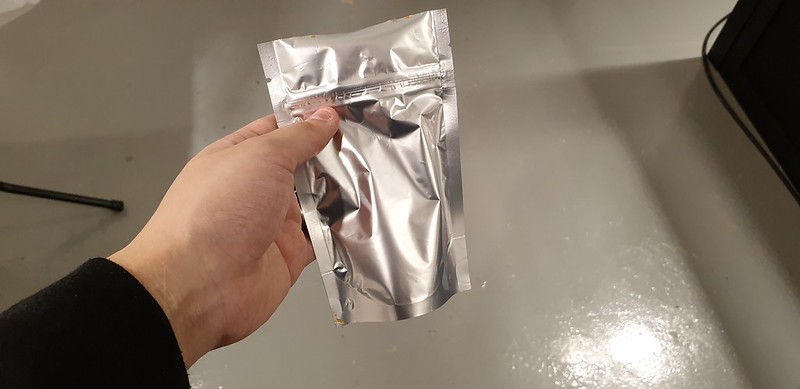

Retextured Carrot Cake, first lovingly batch-cooked in a wok with two different varieties of chai por, then brutally blended so to allow it to be hygienically and efficiently reheated in retort pouches; all to be squeezed directly (or sucked up) into the mouths of the audiences.

Laksa in a dried form, vacuum packed for longevity and easy long term storage.

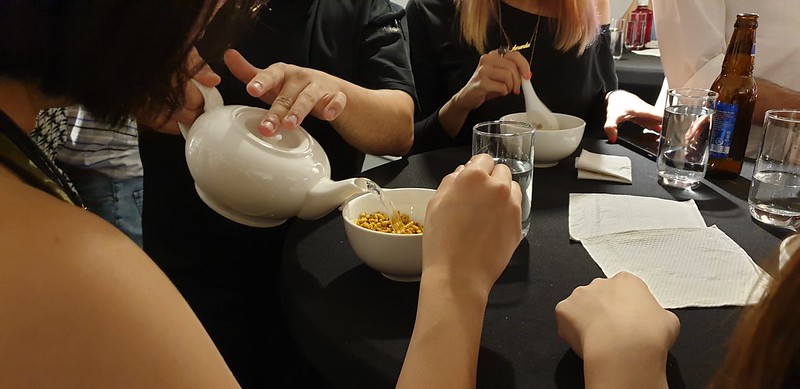
A special Laksa rempah coating the puffed rice, ready to be rehydrated at a moment's notice to produce a seriously authentic tasting laksa soup.
Now that I am writing out this post I realised I forgot to take a picture of dessert - the tau huay!

All of the production of this food was entirely undertaken by the amazing Chef Ming (and his assistant Chef Ron), who are both extremely knowledgeable and superbly skilled and inventive with the food they prepare. The actual realisation of this project completely wouldn't have been possible without Ming's professional and gastronomical expertise and his willingness to do something quite so daring with the food. For most chefs would rather make a pleasing menu, rather than one that draws gasps of shock from an audience; a menu that manages to bring the audience to relook their food with a critical eye. I am not qualified to cook the food and serve it to a public audience for I have not the required basic food hygiene training accreditation to do so, nor do I know the intricacies of how to organise or run a service! My role in collaboration felt much smaller; because ALL the props has to go to Ming's efforts and hard work to make this experience a reality! I only provided the idea and brain fodder for the project, but all of the amazing food (and food innovation work!) was the Chef's work! It was really my honour to be able to work with Ming.
Countless thanks must also go to The Substation: Annabelle and Si Min for facilitating the entire process and helping to take care of all of the small details, as well as all of the Substation staff (and interns Ariel and Celine) for all their help. Without the help of so many people this wouldn't have been possible!
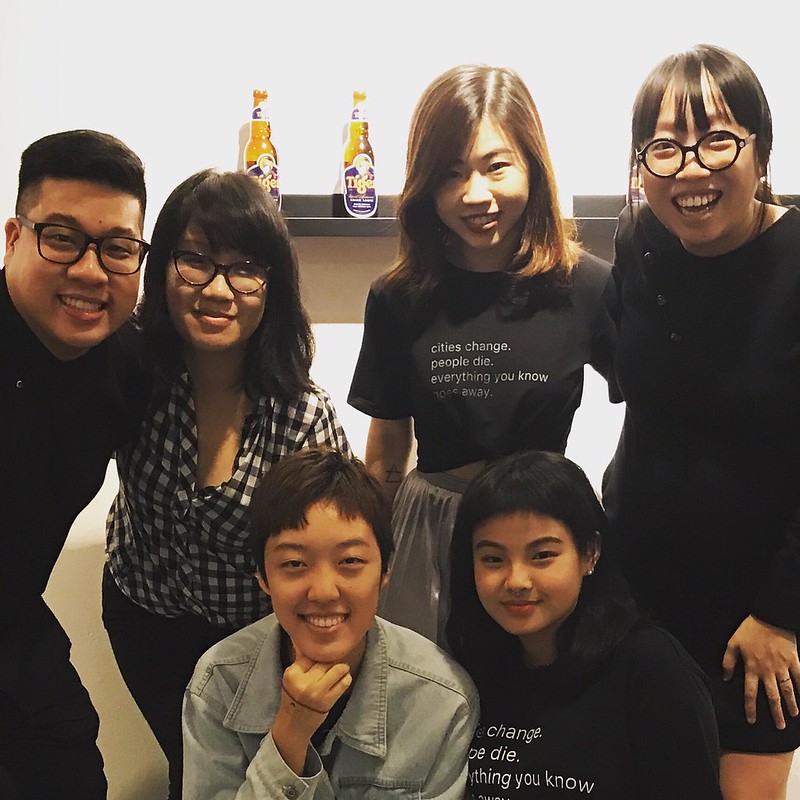
Addendum:
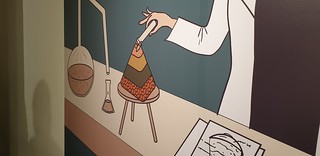
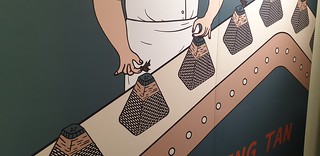
Some highly observant audience members asked me on the night why there wasn't ice kachang and nasi lemak on the menu. I was puzzled about the specificity of this question until I realised that they were referring to the image they had seen on the promotional material drawn by the designer, which ended up being printed in an unexpectedly huge size and mounted on the wall on the night of the event. Well, the answer is that at an earlier stage the shortlisted dishes originally included ice kachang and chicken rice so that was drawn into the flyer. However, the chicken rice was in a pyramid shape that could have been easily interpreted as the pyramid of a nasi lemak as well. Well spotted y'all.

In case you were wondering yes to the credit of the designer the portraits did have a rather uncanny likeness...
In the Press...
Plural Mag - The Hunger GamesThe Peak Magazine - SAD: The Last Meal art exhibition serves up dystopian versions of beloved hawker dishes
SG Magazine - This is how local chef Ming Tan interprets dystopian hawker cuisine
CNA Lifestyle - Kitchen Stories: Fighting insecurity and emotions to prove himself to older chefs
